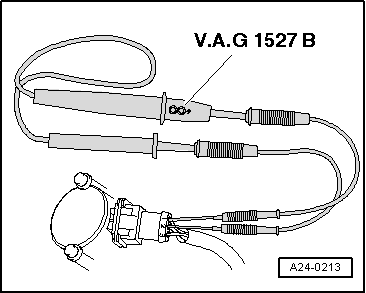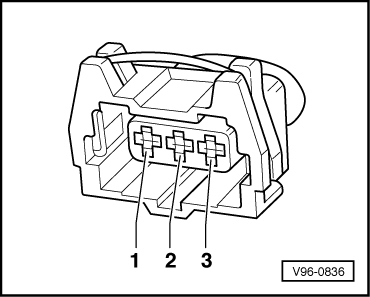| –
| Eliminate open circuit in wiring/short circuit if necessary. |
| –
| If all the test results so far have been OK but a fault related to the camshaft sensor (Hall sender) is displayed again after erasing the fault memory as a test measure, the cause may be as follows: |
| t
| Rotor ring on Hall sender out of position |
| –
| Unbolt Hall sender, then check to ensure that the rotor ring is correctly aligned on the camshaft. If incorrectly installed, the catch will be pressed flat when the securing screw is tightened. |
| –
| If the rotor ring position is OK, check the crankshaft/camshaft assignment. → Rep. Gr.15 |
|
|
|

 Note
Note Note
Note



